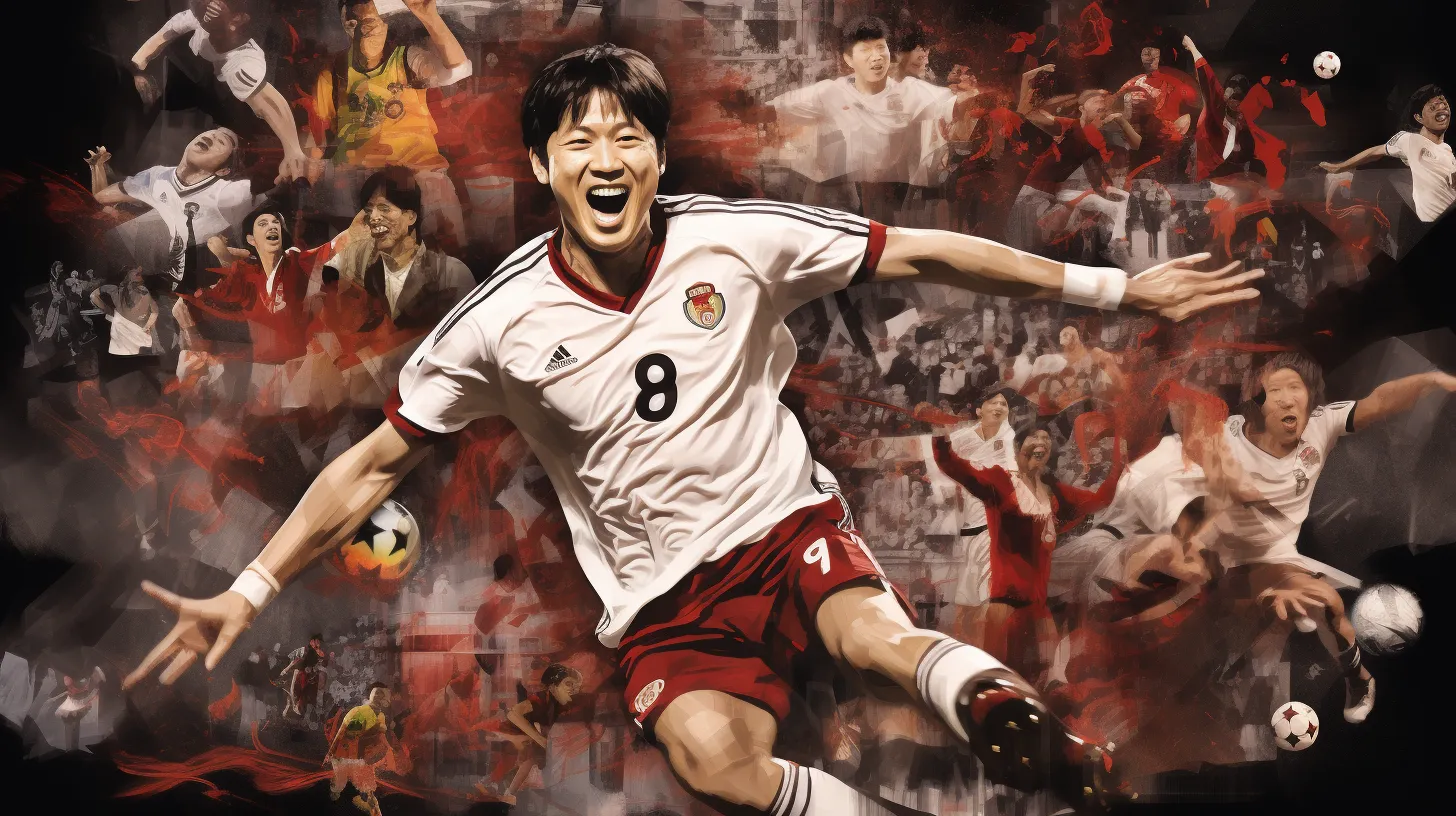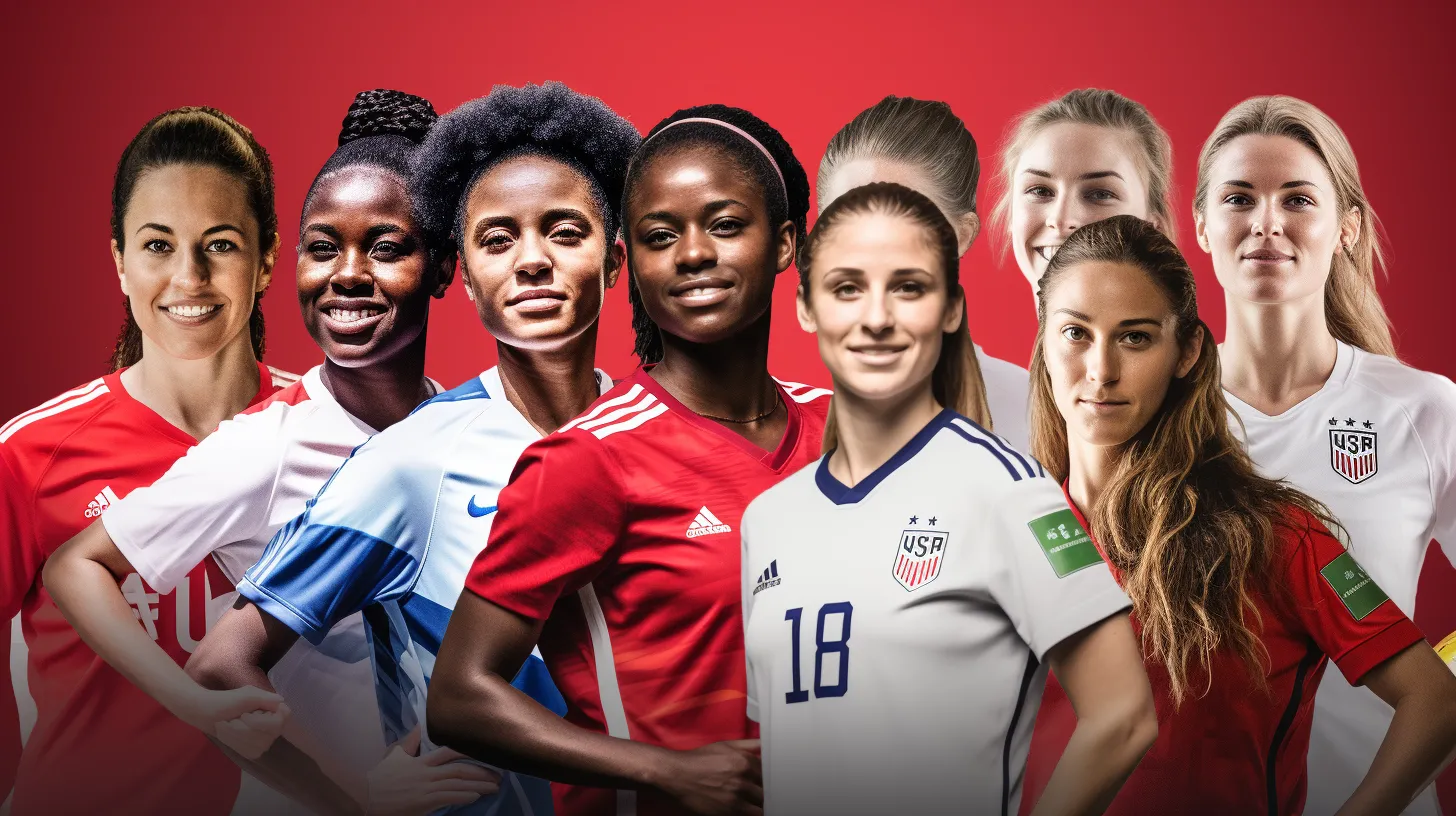The number 9 in soccer is usually worn by an attacking midfielder or center forward. These players are responsible for scoring goals and leading the team’s offense.
Players in this position are expected to be very good at the sport and to score many goals in modern Soccer. The number 9 position has evolved, and players must now be versatile and adaptable to different strategies.
Why Is The Number 9 In Soccer Special?
The number 9 jersey has been worn by some of the greatest soccer players in history. Players who want to be successful in Soccer compete for this position.
With their goalscoring prowess and ability to lead their teams to victory, many of the best number 9 players in soccer history have become game legends.

Ronaldo and Barcelona’s Robert Lewandowski have established themselves as two of the greatest strikers of all time, while others, such as Manchester City’s Erling Haaland, are quickly establishing themselves as the next generation of goalscoring superstars.
Different ways to use the number 9
A soccer team can use a variety of formations, some of which include using a player in the number 9 position. A team, for example, might use a 4-4-2 formation with two center forwards or attacking midfielders wearing the number 9 jersey.
Another common formation is the 4-3-3, which consists of one center forward wearing number 9 and two wingers on either side.
Some teams use a type of center forward called a “false 9,” who doesn’t always stay near the goal. Instead, they play deeper and try to connect with the midfielders and wingers.
How teams can benefit from the number 9
The position of number 9 is critical for teams looking to score goals and create chances. A player in this position must be able to move well off the ball and find space to make runs into dangerous areas.
They must also have strong passing and playmaking abilities to set up opportunities for their teammates. A team can put pressure on the opposing defense and create scoring opportunities by effectively using a player in the number 9 position.
Common strategies employed by teams with a 9 on the field
There are several strategies that teams with a number 9 player can employ to gain an advantage over their opponents. The number 9 can stretch the defense and create space for other players to attack.
This can be accomplished by running to the wings or dropping deeper to connect with the midfield. Another common strategy is to use the number 9 as a target player, playing balls into their feet or to their heads for them to hold up and allow other players to join the attack.
Teams may also use the number 9 as a playmaker, relying on their passing and creative abilities to set up opportunities for their teammates.
Responsibilities in the field of a number 9
A number 9’s role is consistently finding the back of the net, but it also entails more than just scoring goals. These players are frequently the playmakers on their teams, assisting in creating opportunities and advancing the ball.
They are expected to have excellent positioning and to be in the right place at the right time to receive the ball and score.
What is a False 9 in Soccer?
The false 9 is a unique position in Soccer that combines the roles of a number 9 and an attacking midfielder. The false 9 players are usually positioned as lone strikers, but they can also drop deep into midfield to link up with the other forwards and midfielders. This allows them to create space for their teammates and chances for themselves.
As a false 9, they are responsible for being creative on the ball, making runs into space, and supporting their teammates. They must also be able to read the game well and anticipate where the ball will go next. Additionally, they must have good vision and passing ability to find their teammates in dangerous positions.
Every player who wears the number 9 jersey is expected to be one of their team’s best and most complete players, and the pressure to perform well can be intense. However, the rewards can be enormous for those who are up to the challenge.
The number 9 plays an important role in the attacking phase of the game as a central midfielder or center forward. They lead the charge and get the ball into the goal, but they must also be able to defend and contribute to the overall team effort.

In addition to their goalscoring abilities, number 9 players are frequently expected to be strong passers and playmakers, capable of creating chances for their teammates and maintaining possession. They must also be able to move well off the ball and find space to run into dangerous areas.
While a number 9’s primary goal is to score goals, they must also be able to adapt to their team’s style of play and tactics. Two examples are dropping deeper to link up with the midfield or making runs to the wings to stretch the defense. A number 9’s role is highly dynamic, requiring a player to be versatile and adaptable.
The number 9 jersey is prestigious in Soccer, worn by players who are expected to lead their team’s attack and score goals. These players are frequently among the most skilled and complete on the field, combining scoring ability, playmaking ability, and versatility.
The responsibilities of a soccer player who wears the number 9 jersey can change based on their team’s strategy and how they play. However, this soccer position is always very important, and the player needs to be very good at their sport.
When Did Numbers Truly Become Associated With Soccer?
Since the early twentieth century, numbers on soccer jerseys have been used consistently. The first recorded use of numbers on soccer jerseys occurred in an August 1928 match between Sheffield Wednesday and Arsenal in England.
The numbers were assigned to each player based on their position to assist officials in identifying them. The use of numbers on soccer jerseys spread quickly and became standard practice throughout the world.
In the early days, numbers were frequently assigned based on a player’s position, with goalkeepers typically wearing number one, defenders wearing numbers two through four, midfielders wearing numbers five through eight, and forwards wearing numbers nine through eleven.
These numbering systems have evolved, with most teams now employing a more flexible system in which players are assigned numbers based on their personal preferences.
Can a Player Wear #9 At a Different Position?
In the modern soccer game, players can wear #9 at a different position. This is because the number on a jersey is not necessarily based on the player’s position.
For example, if a new player joins a team and wants to wear #9, they can do so regardless of their position. The same goes for any other number; it does not have to be assigned to one specific position.
This allows players to choose whatever number they want without worrying about being restricted by their position. It also allows teams to assign numbers more freely and ensure that each player has a unique number that they can proudly display on their jersey.
Is number 9 in Soccer a lucky number?
Some people like to wear lucky numbers on their clothing or sports jerseys because they think they are lucky. Although the number 9 isn’t typically thought of as one of the luckiest, some people may have a special connection to it or have always worn the number 9 jersey throughout their playing soccer career.

People may want to wear the number 9 jersey if a player with that number has a lot of success because it becomes associated with their success. For some people, wearing the number 9 jersey can be thrilling.
Some famous Number 9 in Soccer?
Numerous well-known soccer players have worn the number 9 jersey throughout time. The following are some of the most notable examples:
- Early in the 20th century, Ferenc Deák, a striker from Hungary, played for Ferencváros and the Hungarian national team. He is regarded as one of Hungary’s all-time top goal-scorers.
- Gerd Muller was a German striker who played for Bayern Munich and the German national team in the 1970s. He is one of the top goal-scorers in the club and international competitions.
- Ajax and the Dutch national team used striker Marco van Basten during the 1980s and 1990s. He was a three-time winner of the Ballon d’Or and is regarded as one of the greatest forwards of all time.
- Alan Shearer was a striker from England who spent the 1990s playing for Blackburn Rovers and the English national team. He has scored the most goals in the English Premier League’s history.
- Cristiano Ronaldo is a forward from Portugal who has represented Manchester United, Real Madrid, and his country on the international stage. He is regarded as one of Soccer’s all-time greats and has received numerous honors, including five Ballon d’Or trophies.
These are just a few famous soccer players who have donned the number 9 jersey over the years.
While using numbers on soccer jerseys was intended to assist officials and spectators in identifying players, they have also become an important part of the sport’s culture and history.
The number 9 jersey is a special shirt that many famous soccer players have worn. It is very popular, and many young players want to wear it too.

